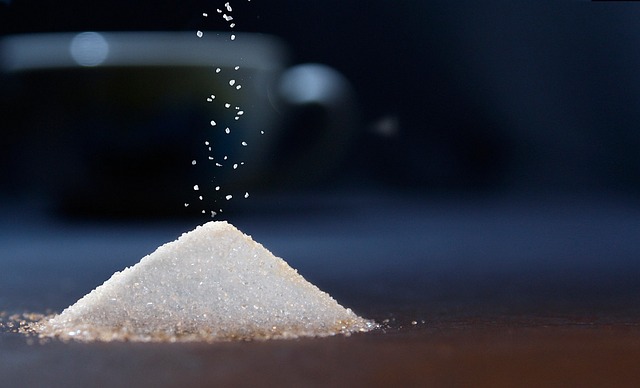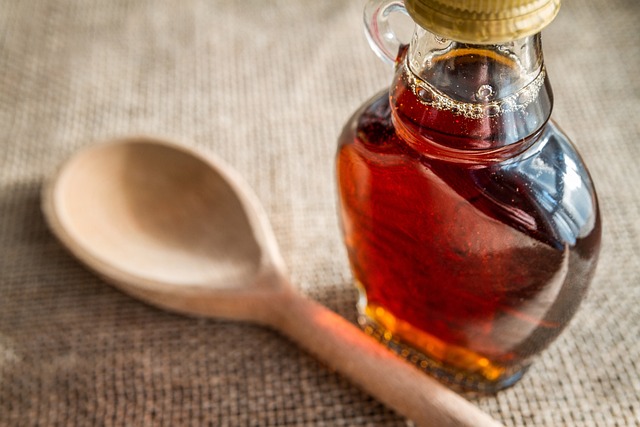Making preserves is a great way to use up surplus fruit and make tasty snacks and treats. However, if you’re looking to reduce the sugar content in your preserves, it can be tricky to know where to start. Low sugar preserves are preserves made with a reduced amount of sugar.
This can be done by substituting some of the it with another sweetener, or by simply using less sugar in the recipe. Low-sugar chutney and jam offer a healthier option for those looking for a less sweet preserve, and it can also be helpful for those who are diabetic or have other dietary restrictions.

When it comes to low-sugar preserves, there are pros and cons to consider.
On the one hand, these preserves can be a great way to cut down on sugar intake, especially if you’re looking for a healthier option. Additionally, they can also be good for people who are diabetic or have other sugar-related health issues.
On the other hand, however, they can sometimes be more expensive, to buy and make, than their regular counterparts. They may also not taste as good, or as sweet, as regular preserves. This can make them less appealing to some people.
Risks and Possible Remedies when making Low Sugar Preserves:
- 1.Risk – SAFETY
It is important to make sure that the preserves will still be safe to eat after being stored in the fridge or pantry as reducing the sugar also means a reduction in the preserving role of the recommended amount of sugar in the recipe, or overall. So the risk of the preserve spoiling is higher.
Possible Remedy:
Freeze or refrigerate the preserve. Safety checks do still apply when using it.
- 2.Risk – THE SET
If there is not enough sugar in the recipe, the preserves may not be set properly and this should be anticipated.
Possible Remedy:
Use a thickening agent such as pectin, chia seeds or arrowroot to improve the texture and set of this type of jam.
- 3.Risk – TASTE
Low-sugar preserves may not taste as good as those made with more of it. You, therefore, need to ensure that the flavour of the preserve is not compromised.
Possible Remedy:
The ‘syrup’ sweeteners such as honey or maple syrup can help to offset this issue. Getting the ratios of other sweeteners spot on can also reduce this risk.
- 4.Risk – LESS FLEXIBLE
Make sure that you test the recipe before making a large batch, as low-sugar recipes can sometimes be more difficult to get right.
Possible Remedy:
Start small, to limit potential waste. Also, a limited amount can give you more confidence and freedom to undertake the trial-and-error that is part of making preserves that meet your needs.
Ways of Making Low Sugar Preserves
A. The Direct Approach
Reducing the Amount of Sugar
The commonest way that most people approach reducing the sugar content in a recipe is simply to use less of this ingredient. This will result in a slightly less sweet preserve, but it will still be safe to eat and should maintain its flavour. It is advisable to experiment and reduce the sugar in small amounts only to balance out all the elements that it brings to a preserve.

You should not assume that the outcome will be the same as described in the recipe e.g. you may have a softer set, not as flavoursome and depending on how much you have reduced the sugar, you may have to store it in the freezer or the fridge with a plan to use it up sooner.
So, making preserves with low sugar is a great way to create a healthier option for those looking for a less sweet preserve. By using less or substituting some of the sugar with another sweetener, you can still create a delicious and safe preserve provided you are aware of the consequences of this adjustment.
B. Using Other Options
Non-Sugar Sweeteners
One way to make low-sugar preserves is to substitute some of it with another sweetener. This can be done by using honey, agave nectar, or even fruit juice. Then there is the array of other non-sugar sweeteners like Stevia, Erythritol, Truvia, Corn Syrup, Splenda and the long-serving Saccharine.
Fruit Juice for low sugar preserving
A good quality pure juice already contains natural sugars, so you may need to use less of it to achieve the desired sweetness. Fruit juice can also add an extra layer of flavour to preserves. It can also be used to make a low-sugar jelly preserve.
When using fruit juice as a sweetener, be sure to select a juice that compliments the fruit you are using in your preserves. For example, if you are making strawberry jam, you might want to use apple or grape juice as your sweetener. And remember, because juice already contains natural sugars, you may need to use less of it than you would sugar.
Honey, Agave Nectar, Maple Syrup

Low-sugar preserves can be made with sweeteners such as honey, agave nectar, or maple syrup. These preserves will have a slightly different flavour than those made with sugar, but they will still be delicious!
While these sweeteners are natural, they still add a significant amount of calories to a recipe. For this reason, it is important to weigh the pros and cons of using them before deciding whether or not to include them in your preserves.
Stevia low calorie preserve sweetener
When it comes to low-sugar preserves, there are a few different sweeteners that you can use. One option is stevia, which is a natural sweetener that comes from the Stevia rebaudiana plant. Stevia is a zero-calorie sweetener, so it is a good choice for those looking to reduce their sugar intake. It is important to be aware that it can be bitter if used in large amounts, which can be a limiting factor in the making of your preserve.
Erythritol
Another option is erythritol, which is a low-calorie sweetener that is made from fermented sugars resulting in a sugar alcohol product. While it is low in calories, it can cause digestive problems if used in large amounts.
Both stevia and erythritol are good options for low-sugar preserves, and they can be used in place of it in most recipes. Just make sure to follow the recipe closely, as using too much of either of these sweeteners can result in a preserve that is too sweet or doesn’t set properly.
When making low-sugar preserves, it may be useful to use a combination of stevia and erythritol. This will help to reduce the bitterness of stevia and the digestive problems associated with erythritol.
Corn Syrup
Corn syrup is a low-sugar alternative that can be used to make preserves. It is available at most grocery stores and is often used in commercial products.
There have however been increasing concerns about the possible negative health impact of using corn syrup and so this has been viewed with a lot more caution in homemade recipes.
Sucralose/Splenda for reduced sugar
There seem to be a lot of mixed opinions when it comes to making preserves with Sucralose (Splenda). Some people say that it doesn’t work well, while others say that it’s the only way they can enjoy preserves without feeling guilty about the calorific content.
Splenda is a no-calorie sweetener that can be used as an alternative in recipes. When using it, you will need to use a different ratio of ingredients than you would use if making preserves with regular sugar, so make sure that you have researched this ahead of cooking.
Truvia for low sugar preserve making
Truvia is a low-calorie sweetener that comes from the Stevia plant. It is a natural sweetener that does not have the same aftertaste as many other artificial sweeteners. When making preserves with Truvia, you will need to use a little more of it than you would sugar, but it will still give you a great-tasting preserve with a fraction of the calories.
Saccharine
Saccharine is a low-calorie sweetener that is often used as a sweetening alternative. It can be found in tablet or liquid form, and it is said to be about 200-300 times sweeter than regular sugar.
When using saccharine in preserves, you will need to use less of it than you would sugar. For every cup of sugar that a recipe calls for, use only 1/4 teaspoon of saccharine. You may also want to add a bit of lemon juice to help offset the sweetness.
Conclusion
The above information outlines the things that you need to consider when making your low sugar preserve choice. Ask yourself what it is that you want to achieve; you can make a list in order of what is most important for you from some options like low calorie, good taste and texture, good set, safe preservative, can last for some time, no other unwanted effects.
You do need to accept that, as with most things, it is always a balance and will come down to personal choice – but then that this is one of the best things about making it yourself!
A compromise may be to either use the full amount of sugar in the recipe, get all the benefits from that and only eat the preserve in moderation, or choose a low-sugar recipe, try to limit or accept the impact on taste and texture, with a plan to freeze or refrigerate the resulting preserve.
People have many reasons for making preserves this way – maybe you or someone in your family has diabetes, or you are looking to cut down the amount of processed foods in your diet. Whatever your reason, making preserves with low sugar is possible. However, if you’re more concerned with taste or storage, then you may want to stick with regular preserves.
Whichever you choose, enjoy!